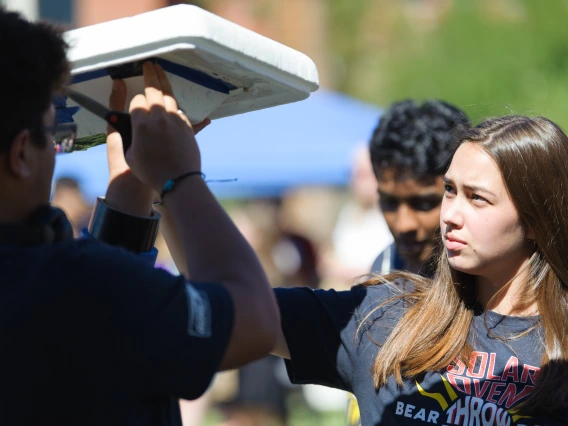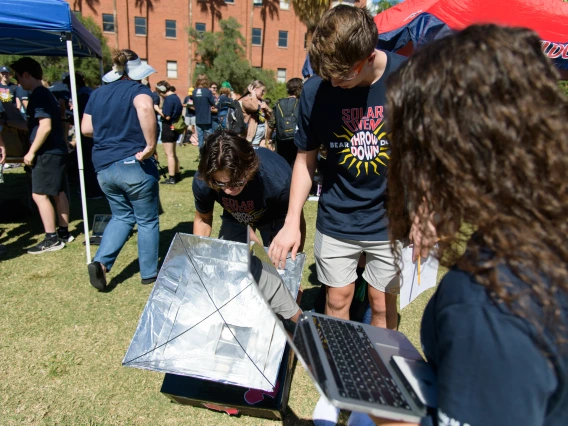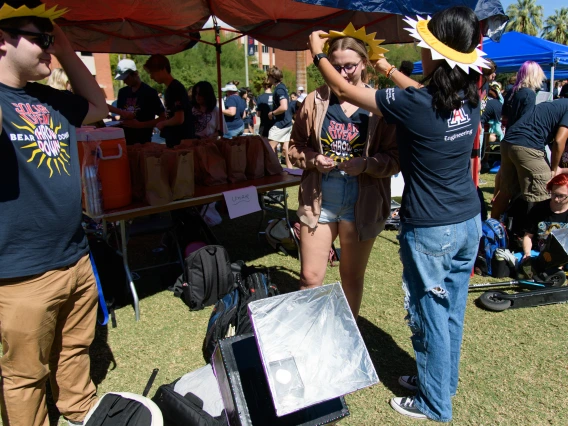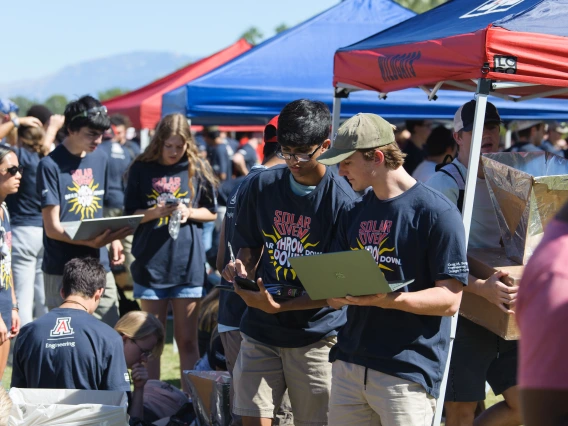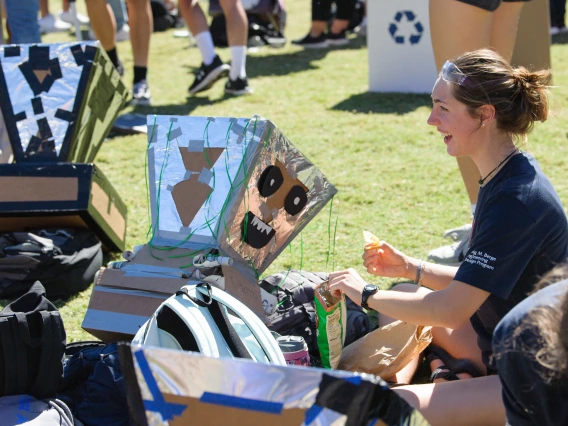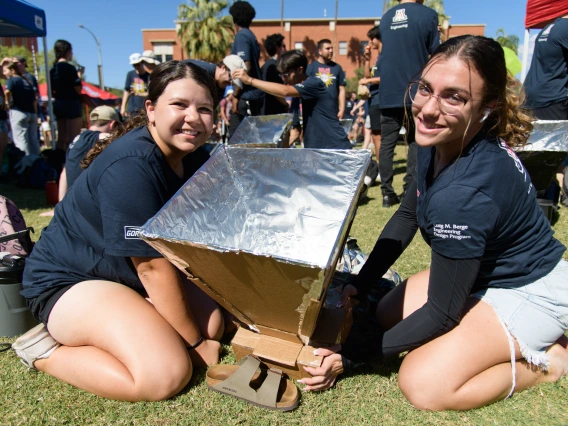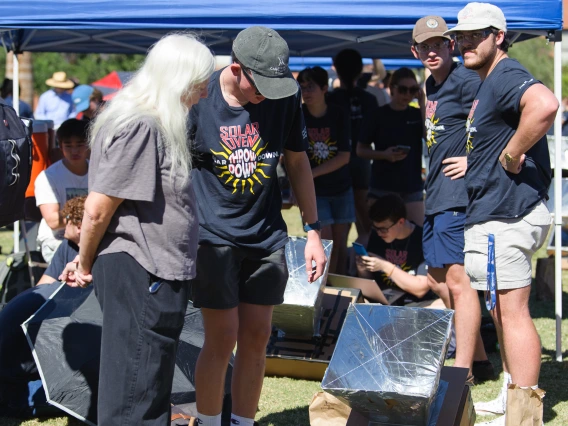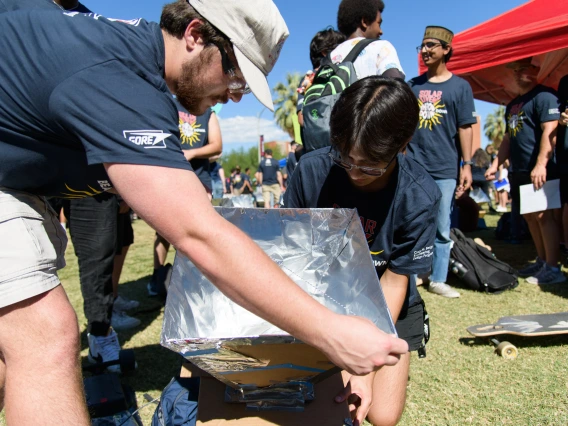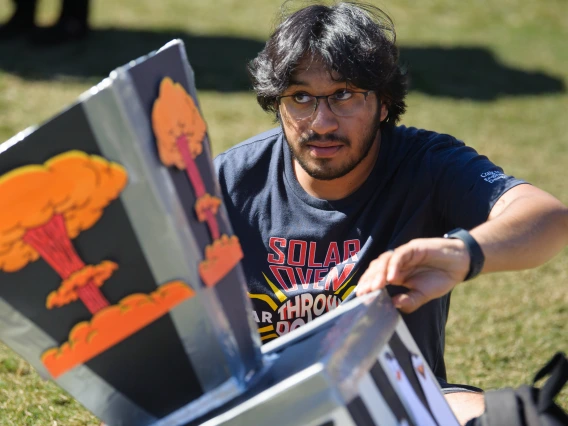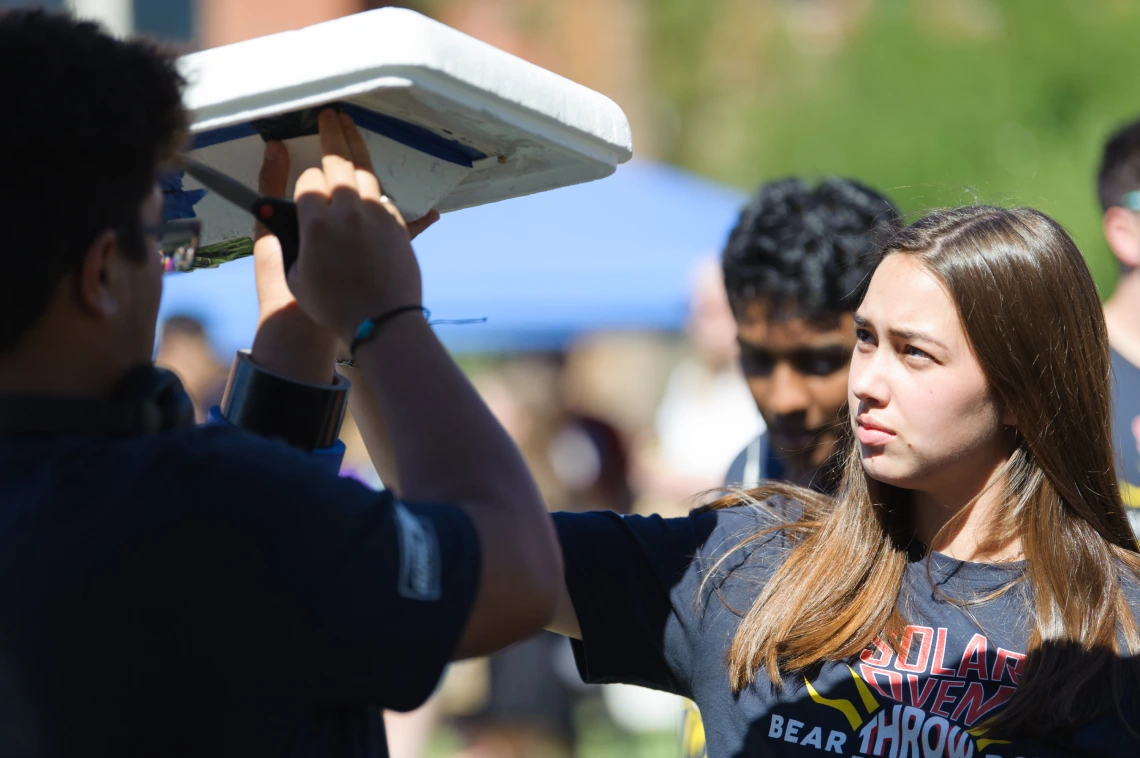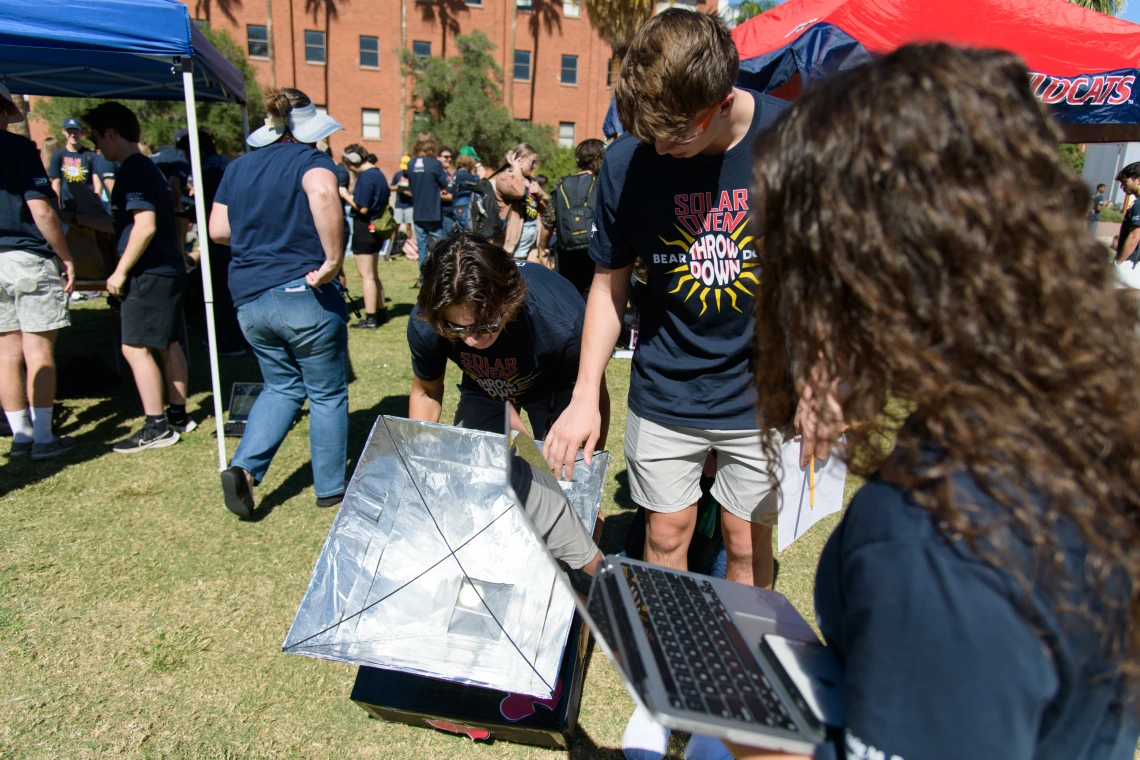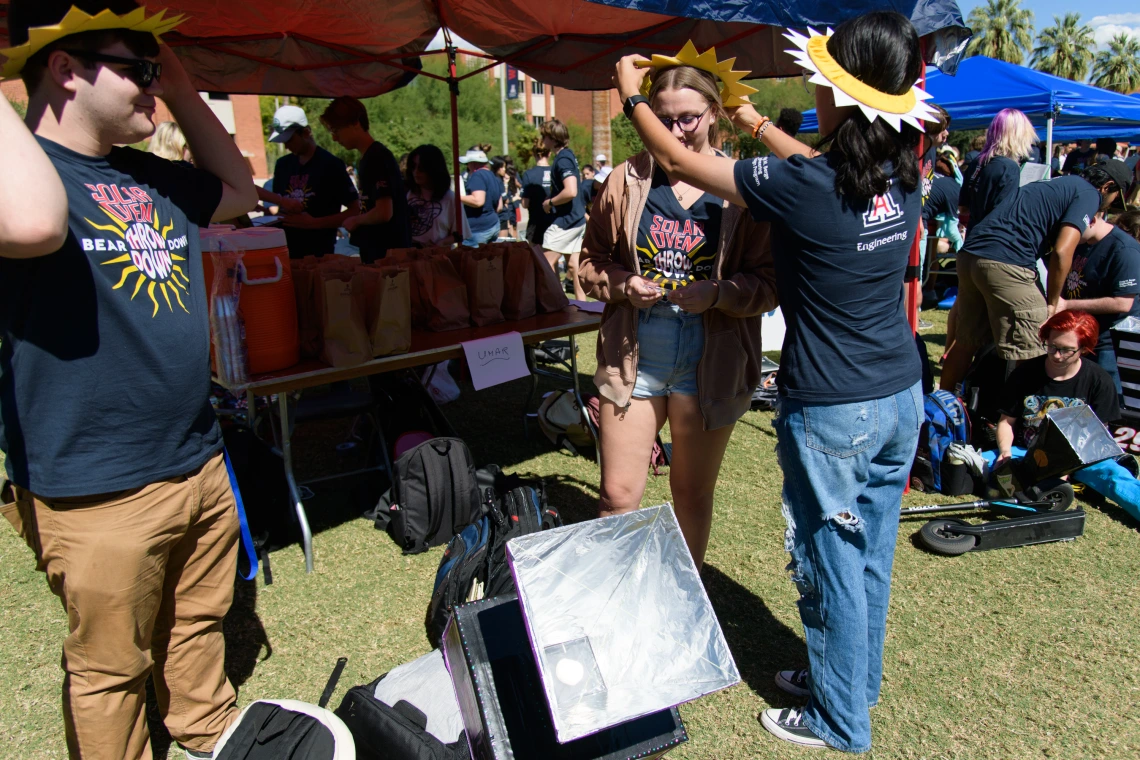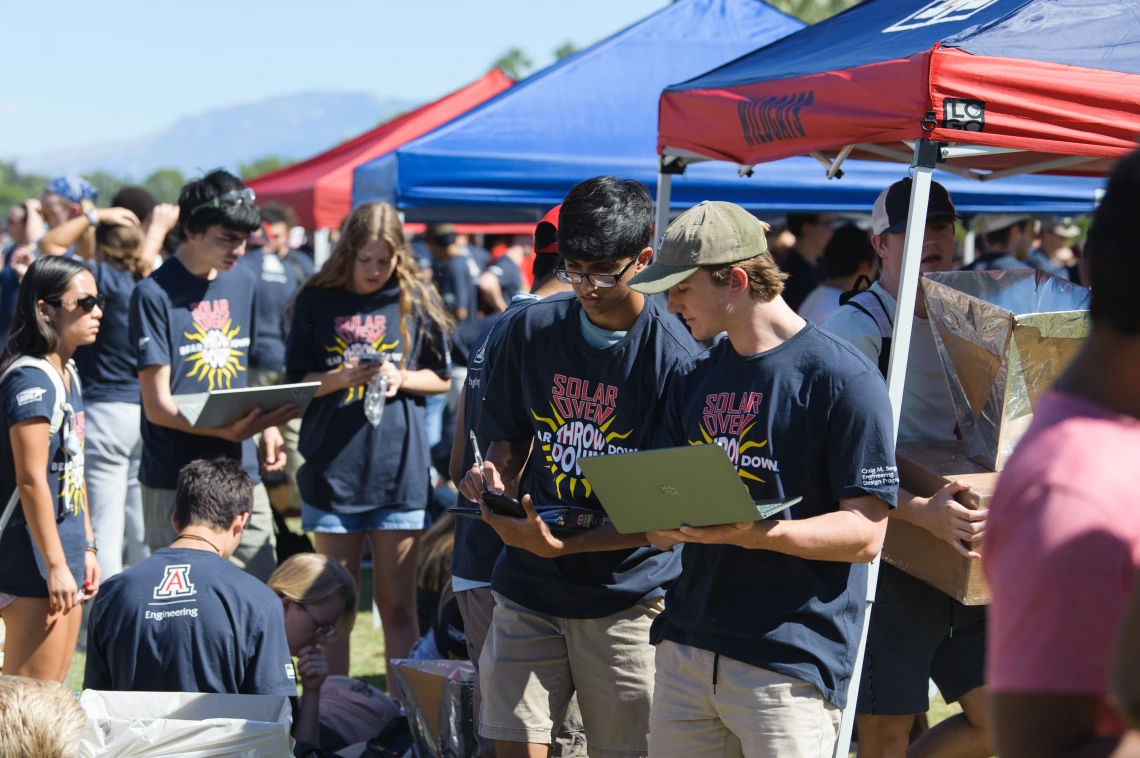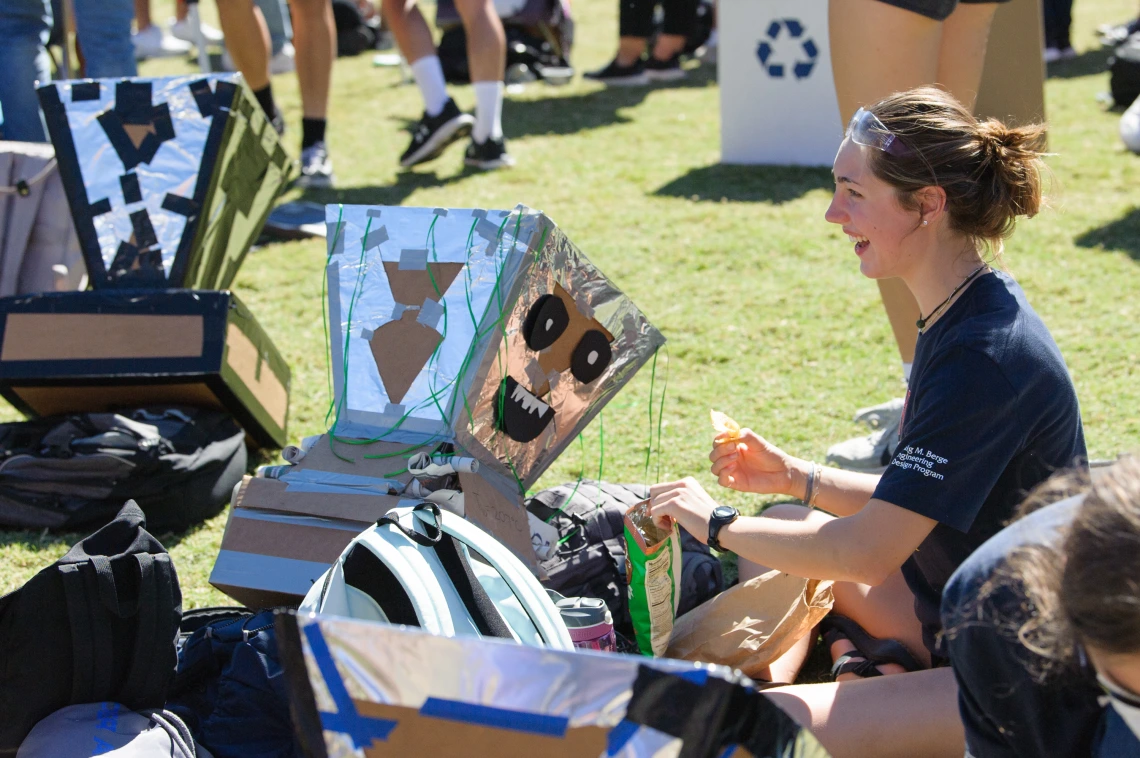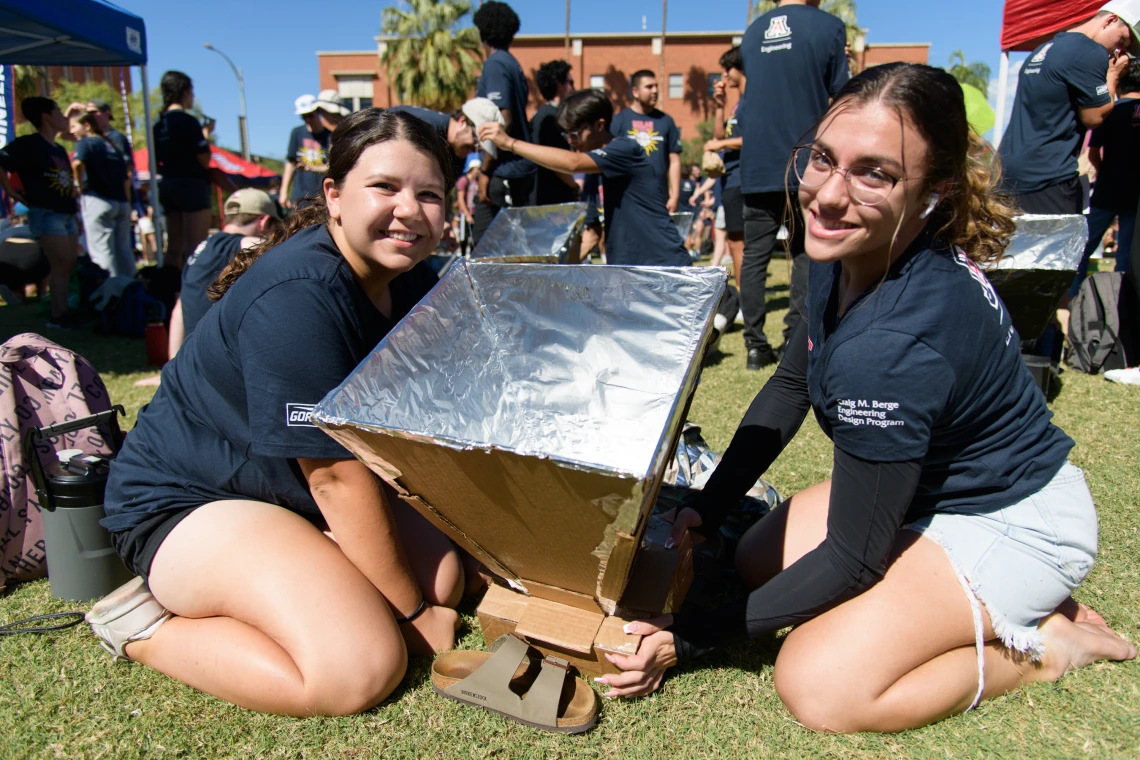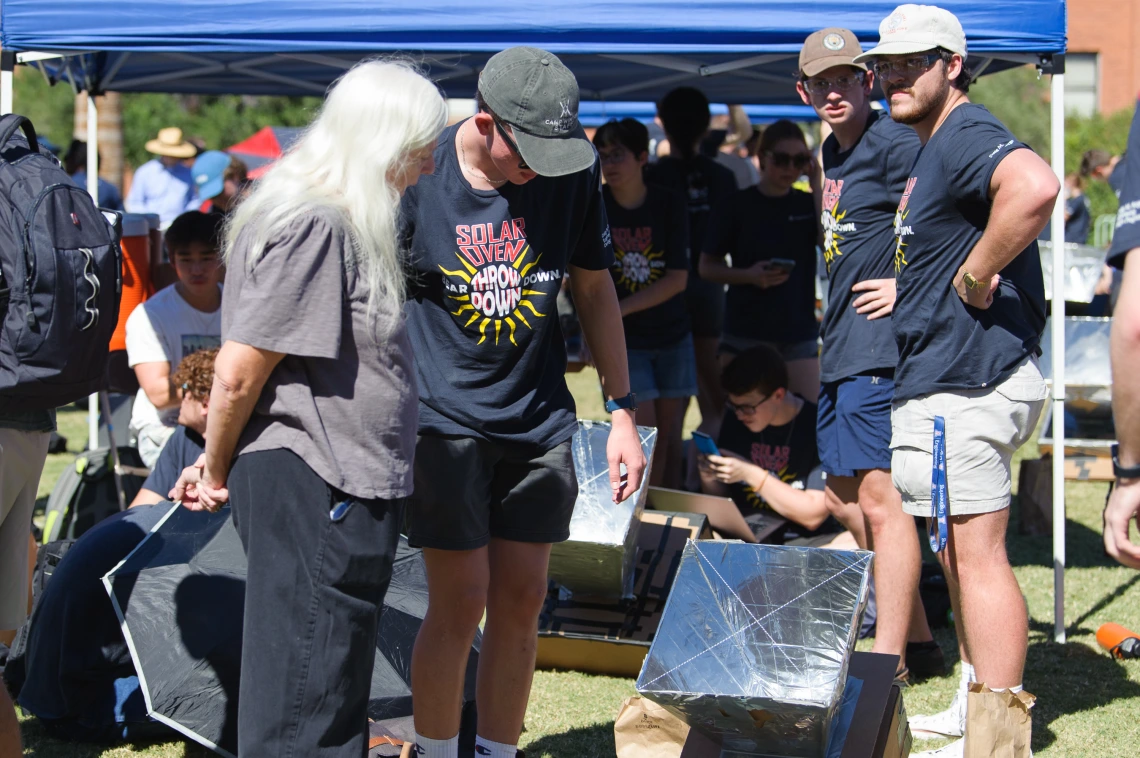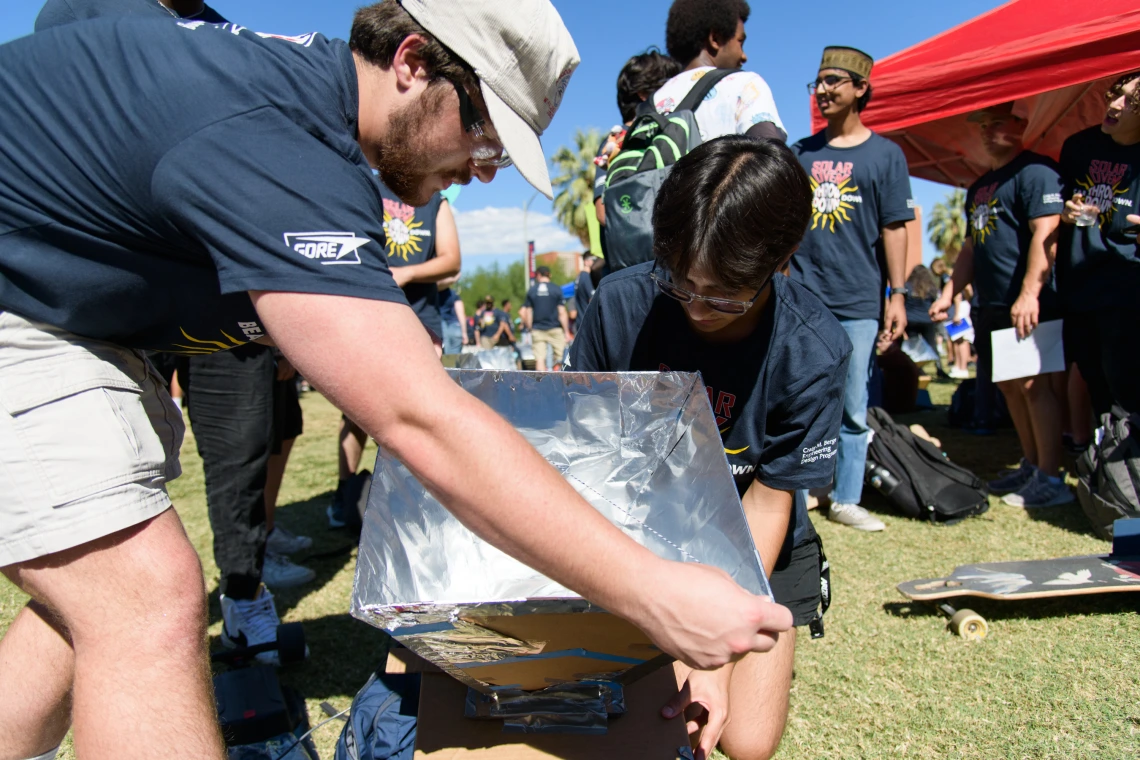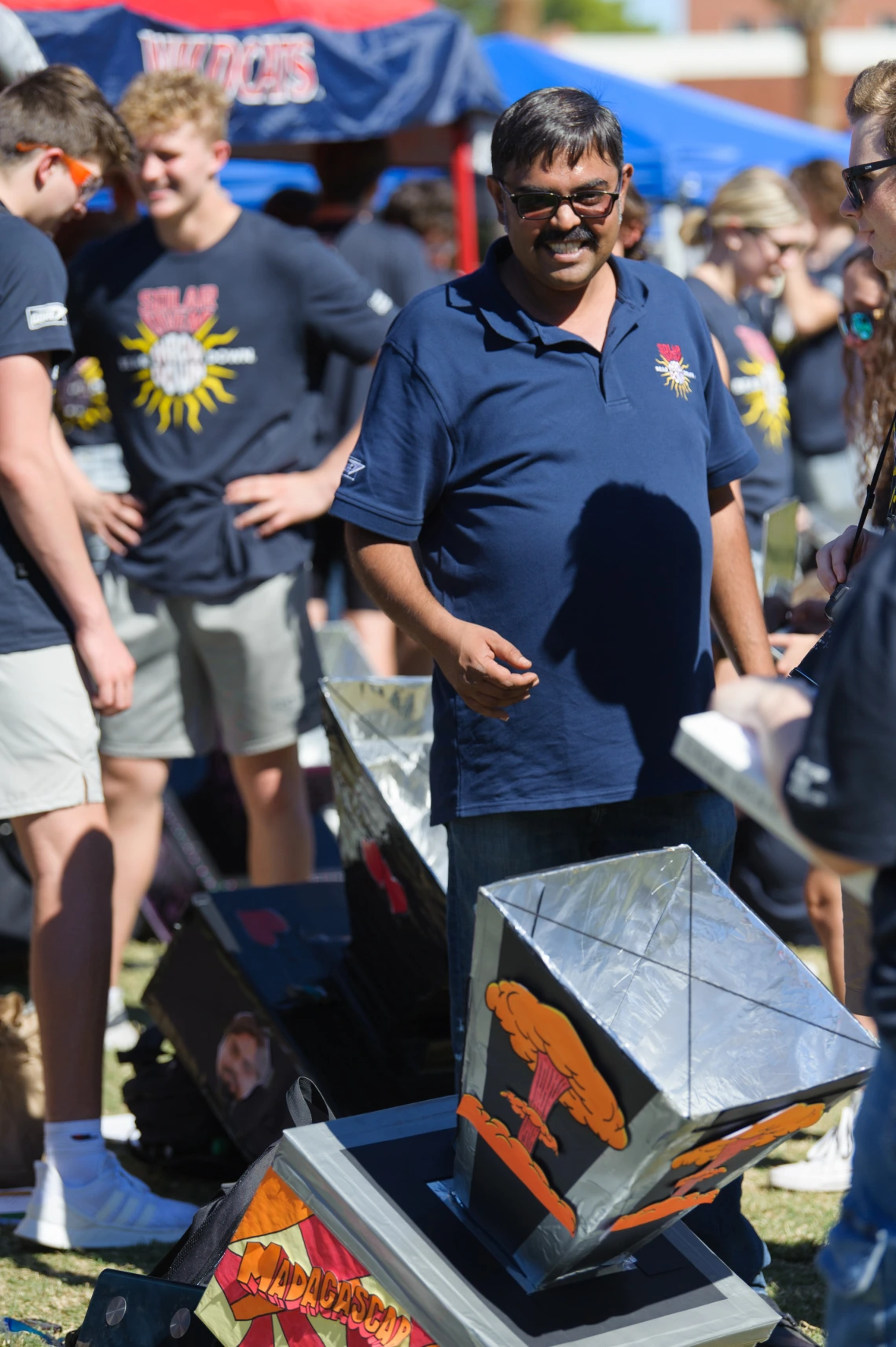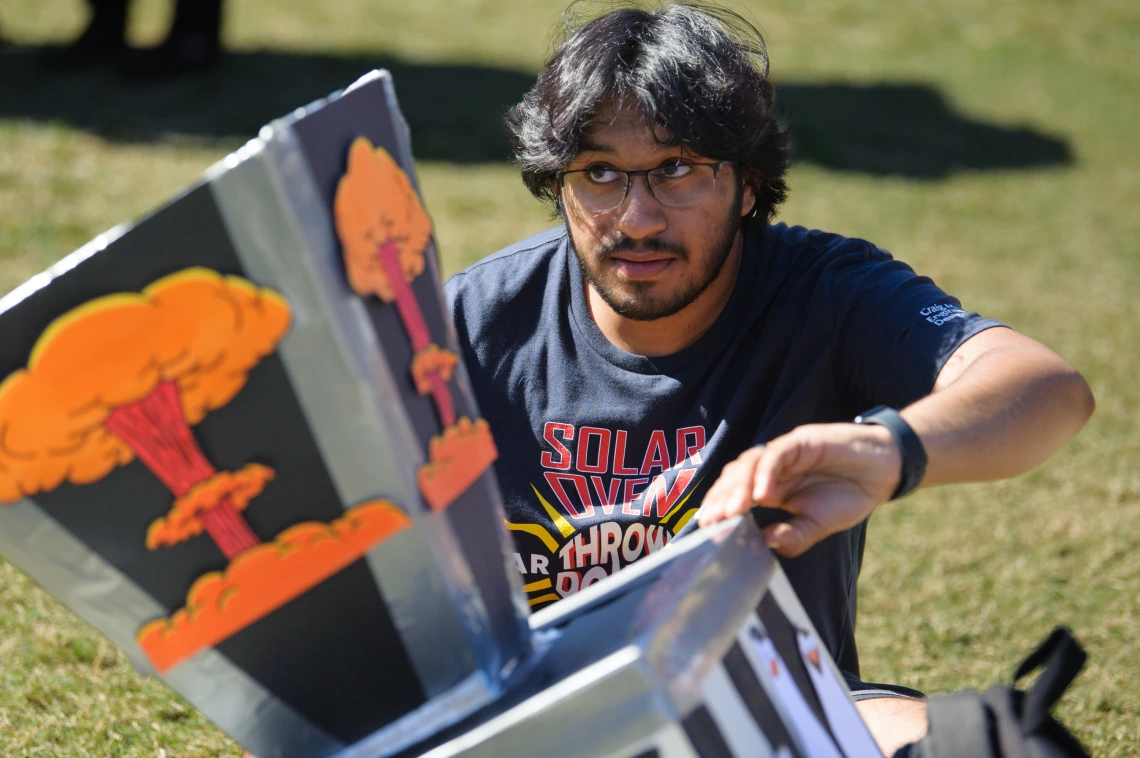Solar Oven Throw Down 2022: A Day for New and Lasting Collaborations
600 students took early steps into engineering design as the college celebrated 10 years in partnership with Gore.
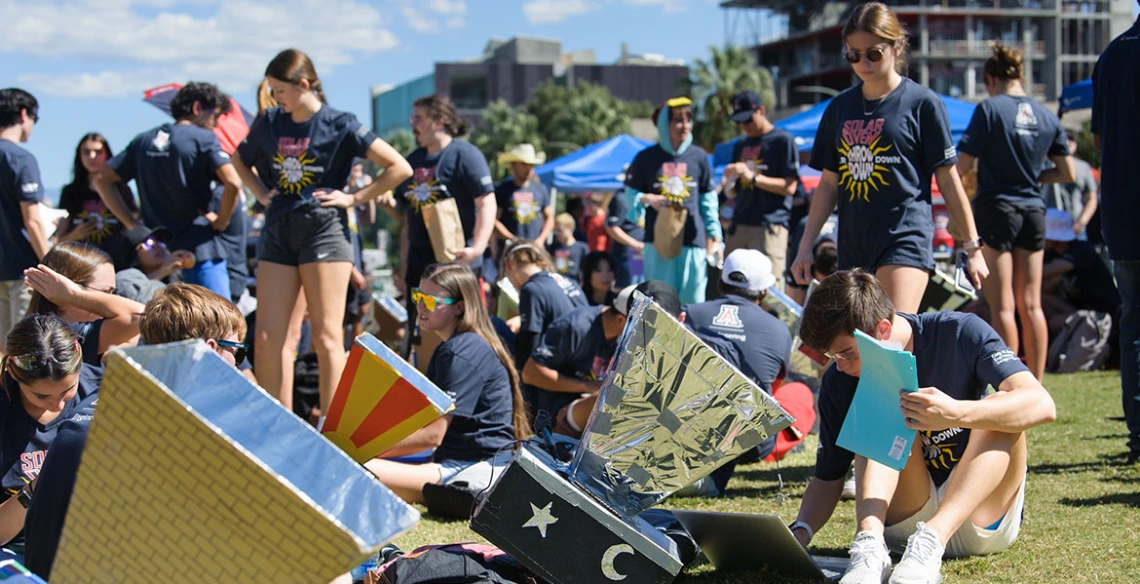
No description provided
The Solar Oven Throw Down is not about the biscuits. You wouldn’t want to eat them because glue might have dripped onto the baked goods as the student-built ovens heated to their maximum temperatures, ranging from 212 to 425 degrees Fahrenheit. Besides, by the end, most of them looked overly toasty.
So is it about constructing solar-powered ovens from common, low-cost materials? Well, no. Not according to Kenneth George, whose ENGR 102 class earned the distinction of best overall performance at the Oct. 12 College of Engineering student competition and event.
“It’s the engineering process that counts,” said George, an adjunct lecturer, adding that the oven competition holistically combines mathematical modeling with mastery of scientific concepts including thermodynamics and energy conservation. It also requires building an initial prototype model and the use of tools such as Excel.
“The whole picture is new to them,” he said.
George’s class won the overall Throw Down award by achieving the highest average performance index for all teams in the competition. Each team’s and class’ PI is calculated by dividing the temperature achieved by the cost of materials. The award for highest PI achieved by a team went to the class section taught by Umar Amjad, lead instructor for ENGR 102. Professor of Practice Cac Dao’s class won highest average temperature at 339 and the “all in the same boat” teamwork award from sponsor W.L. Gore and Associates.
Teaming, Competing and Gearing Up for More
ENGR 102 is a required course for first-year students, and the Solar Oven Throw Down is their first hands-on design experience as part of the Craig M. Berge Engineering Design Program. The competition is an effective introduction to experiential education, said Byron Hempel, assistant professor of practice.
“It’s fun and cool to give students hands-on experience,” he said. “It gets gears turning and gets freshmen excited for the next three years.”
Students form groups of around five students and collectively choose everything about their ovens – dimensions, insulation material, even aesthetics.
Adrian Braileanu was a member of the Wasted Potential team, which won the award for best decorated oven within George’s class. The team fashioned its oven to resemble a NASCAR race car to appeal to George’s love of the sport.
“We learned how to function as a team, how to design something as a team, which you don’t get a lot of experience with usually,” Braileanu said.
For Lucia Alday, a member of the Sunstoppables team, the first time working in a group as an engineering student was reassuring.
“I feel better about doing the next design project, especially in a group. It wouldn’t say it was easy, but it was straightforward,” she said.
A Decade Together
While each oven must cost less than $20 to produce, more than 600 College of Engineering students – part of the largest and most diverse incoming class in University of Arizona history – participated. High school students in the ENGR 102 High School program also took their shot to build the best solar cooker.
Sponsorship is vital to the effort, and this was the 10th year for W.L. Gore and Associates to sponsor the Solar Oven Throw Down.
“We love being a sponsor for this event, and we will continue to because it’s been so successful,” said Valerie Shulby, a 2019 systems engineering graduate and Gore IT technical analyst.
The company supports several college initiatives, as the partnership gives Gore associates the opportunity to recruit new hires, Shulby said.
“Every single person we’ve recruited from the College of Engineering has been very successful at Gore. They prove to be self-motivated and hold up to the culture and the standards that Gore promises. I commend the college for helping prepare students well for industry,” she said.
While heavy recruitment is more typical at events such as career fairs, attending the Solar Oven Throw Down gave Shulby and her Gore colleagues, also alums, a chance to start talking casually with students. Being on the University of Arizona Mall also caused Shulby to reflect on the high quality of her own education while also appreciating continual improvement initiatives.
“Coming back, it’s great seeing the college trying to advance to be one of these top schools,” she said.



